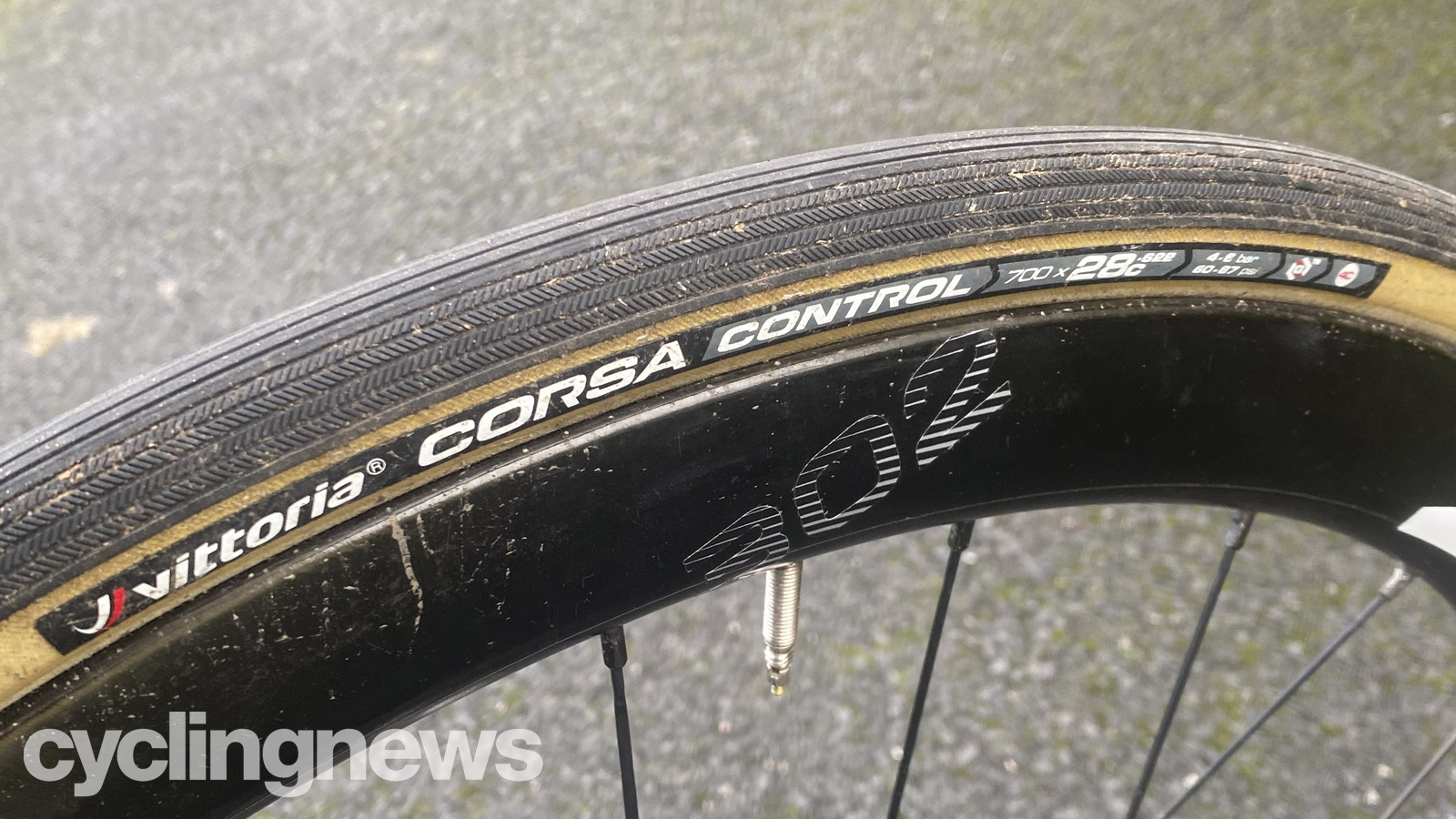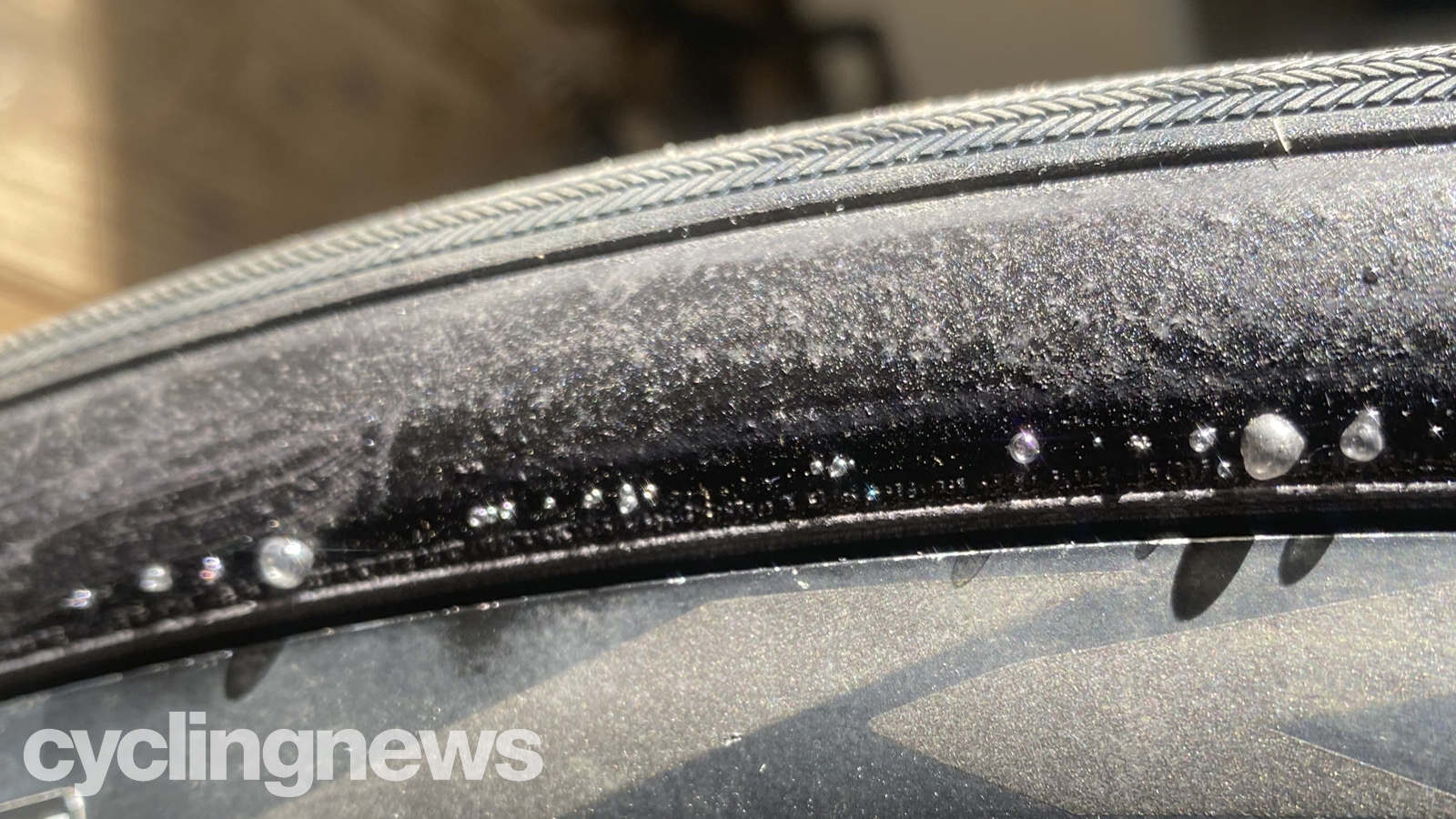Cyclingnews Verdict
‘Classics tread’ version of Vittoria’s popular Corsa adds physical and psychological confidence, rides smoothly and wears really well. Tubeless setup can be a fight though and it can cut easily
Pros
- +
Excellent tread durability
- +
Buoyant ride quality and decent speed
- +
Increased dirty grip and psychosomatic confidence
Cons
- -
Awkward sealant-specific tubeless-ready setup
- -
Cuts relatively easily
- -
Not as fast as older Graphene tyres in the lab
You can trust Cyclingnews
The Vittoria Corsa Control road tyre was introduced a couple of years ago (it was the winning tyre under Tiesj Benoot at the 2018 Strada Bianche) but it was more-recently updated with Vittoria’s ‘functionalised’ Graphene 2.0 quad compound rubber mix. Is that the all-round win the Italian brand claims and does its new tech merit the tyres a place on our guide to the best road bike tyres and best tubeless road tyres?


Construction and fit
Vittoria is right up there with Campagnolo, Cinelli and Columbus when it comes to classic Italian brands. While the tyres are now made outside of Italy (they’d cost around £300 if they weren’t) they’re still handmade using a four-thread (three cotton, one Kevlar) Corespun casing. A quad compound (centres and shoulder get different dual compound mixes) tread extrusion is then hand glued on with laser alignment. The standard ‘open clincher’ tyres then get a Kevlar bead while the ‘TLR’ tubeless tyres get a Zylon bead, nylon sidewall strip (to protect against cracked or sharp carbon rim damage) and multiple, separately cured layers of latex to seal the casing.
The TLR tech doesn’t work quite as well as we’d hope though. The flat-pack cotton casing is no trouble to get onto a tight rim with just a single lever and strong thumbs. Recent Continental, Pirelli and Specialized tubeless tyres we’ve tested have popped into place with just a conventional track pump doing the work, whereas getting the Corsa TLRs to seal onto the rim needed a fully charged compressor with the valve core removed to get enough volume into the tyre fast enough.

We then had issues with the normally totally reliable OKO Magic Milk sealant bubbling through the porous Corespun 320 tpi cotton sidewalls. Even when the obvious bubbling stopped and we’d spun it up and ridden them, they still wouldn’t hold pressure. A quick chat to Vittoria suggested a change in sealant, so we added an extra 30mm of Muc-Off ‘No puncture hassle’ juice (unsurprisingly, Vittoria’s own TNT sealant should work well too) and that did the trick and has held solid since. In other words, they do work tubeless but it’s definitely worth noting that they need more time, more inflation power and potentially more sealant than other leading tubeless tyres to get them up and running.
For the record, the standard Corespun-K tyres fit fine, although the flat-pack delivery always takes a bit more time to get on than a conventional pre-formed tyre. Interestingly both tyres blew up essentially the same 29mm width and 27mm depth despite being listed as 28mm and 30mm. So you’re getting a little wider than expected on conventional Control tyres but slightly narrower on TLR.
Performance
Once on and sealed, performance is very similar between the tyres. The upside of the slightly porous sidewalls is a very light and flexible carcass comparable to the standard tyre. Even with double the normal amount of sealant, the TLR is also lighter as a system than a tyre and tube. That means an easy pick up of speed for a larger volume tyre and an enjoyably buoyant ride as long as you drop pressures (we ran 60 front, 70 rear for a 70kg rider in TLR and 5psi more in the conventional pairing).
Unsurprisingly the mix of central ribs and chevron shoulder tread is slightly noisier than slicker tyres and they don’t feel as ‘tailwind’ fast as Specialized’s RapidAir or as quiet as Continental’s GP5000TL tyres. That on-road feel is backed up by rolling resistance figures from the independent ‘Wheel Energy’ lab that return a decent but not dazzling result on the rollers.
At road tyre sizes, the actual difference in grip on a wet or rough road depending on tread pattern is a moot point, but the Control will certainly tick psychosomatic boxes for those nervous about using a Corsa in the dirtier months. The Graphene 2.0 compound mix seems more predictable in a wide range of conditions than the original Graphene tyres which occasionally let go when we weren’t expecting it. That meant we were happy trusting either of the tyres for reasonably aggressive riding in a wide range of road, weather and temperature conditions, making the Corsa Control tyres a faster alternative to the Rubino on our list of the best winter road tyres.
They seem to be holding up really well in terms of wear life too, which is impressive as G1.0 tyres were already high mileage hitters. From our own experience and that of other users, cut and puncture resistance isn’t great though. It’s certainly not helped by the way the central ribs can hold onto small bits of grit and other sharps before they even penetrate the tyre, so we’d be wary of exposing them to a lot of gravelly roads or relying on them for ugly urban commuting.
Verdict
Vittoria’s Corsa Control was already a classy handmade tyre with smooth-rolling ride quality and visually reassuring ‘Classics’ tread. In terms of consistent grip and durability, the G2.0 version definitely seems a step up. Set-up headaches aside, the tubeless version adds puncture sealing and lower pressure bonuses at a low weight too. We’re not sure if the increased speed and toughness claims of G2.0 hold up though and it’s certainly not the fastest or easiest fitting tubeless tyre available. That means the tubeless version is a harder sell but if you’re an inner tube die hard after a light, well balanced, all-weather performance tyre with Tifosi kudos the latest Corsa Control tyres are still a classic option.
Tech specs: Vittoria Corsa
- Price: £59.99 (conventional), £69.99 (tubeless ready), £89.99 (tubular)
- Weight: 280g (conventional 28mm) 315g (tubeless ready 30mm)
- Width: (19mm internal rim): Std 28 29.1mm TLR 30 29.3mm
- Depth: (19mm internal rim): Std 28 27mm TLR 30 27mm